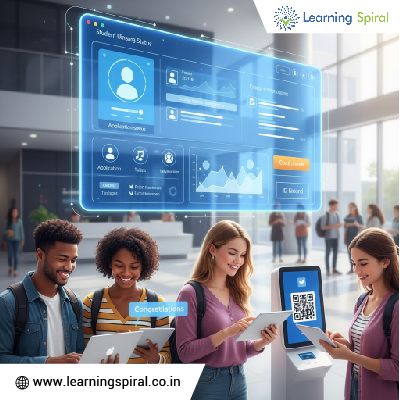
Why Admission & Enrollment Need a Modern System
Admissions are high-stakes and time-bound. Manual workflows slow down verifications, cause data inconsistencies, and create queues—both offline and online. A University Management System (UMS) brings all moving parts—applications, document checks, merit generation, communication, fees, and enrollments—onto one secure, governed platform.
 Core Benefits for Universities and Applicants
Core Benefits for Universities and Applicants
1) Unified applicant journey
Single sign-on for application, document uploads, fee payment, and enrollment confirmation—reducing drop-offs.
2) Accuracy and compliance
Validated fields, duplicate detection, and audit trails minimize errors and support audits/RTI with exportable logs.
3) Speed and scalability
Automated merit lists, category rules, and real-time seat matrices handle peak volumes without bottlenecks.
4) Transparent decisions
Dashboards show application status, waitlists, and seat movements; automated notifications keep applicants informed.
5) Secure payments and receipts
Integrated payment gateways with reconciliation and refunds, producing instant fee receipts and ledger entries.
6) Better allocation & equity
Configurable quotas (category, domicile, EWS, PwD) and reservation logic ensure fair, rules-based allocations.
7) Admin productivity
Role-based access, maker-checker approvals, and bulk actions reduce repetitive tasks across admissions offices.
Typical Workflow (End-to-End)
-
Program setup & eligibility rules (intake, quotas, cut-offs)
-
Online applications & document capture (OCR/validation)
-
Automated merit lists & counselling/rounds (multi-round logic)
-
Fee payment & verification (UG/PG, part/full payments)
-
Seat allocation & migration (upgrades, freezes, withdrawals)
-
Enrollment & reporting (roll numbers, MIS exports, audit logs)
Key Integrations that Matter
-
ID & certificate verification: Aadhaar, category certificates, prior-board results
-
Payments: Multiple gateways, UPI, bank reconciliation
-
Messaging: Email/SMS/WhatsApp for status and counselling updates
-
Downstream systems: Examination modules, timetables, and student ERP for a seamless start to academics
Common Challenges—and How to Address Them
-
Data quality issues: Solve with structured forms, validation rules, and deduplication at intake.
-
Policy complexity: Use configurable rule engines for quotas, reservations, and tie-breakers.
-
Peak-time performance: Cloud scaling and queue-based processing stabilize high traffic.
-
Change management: Provide clear SOPs, help videos, and phased rollouts for staff and applicants.
-
Transparency & grievances: Publish audit logs, counselling schedules, and grievance workflows with SLA timelines.
Future Trends to Watch
-
AI assistance for eligibility checks and query resolution (chatbots).
-
Predictive analytics for demand forecasting and seat planning.
-
Digital credentials for instant provisional admissions and verifiable records.
-
Deeper ERP linkage so admission data flows into attendance, examination, and Digital Evaluation modules natively.
Learning Spiral supports universities and boards with secure, scalable platforms across Pre Examination Processing, Online Assessment, and Digital Evaluation, ensuring admissions data flows cleanly into downstream academic and examination processes.
Ready to modernize admissions before the next cycle? Explore Learning Spiral’s full suite—from application to On-Screen Evaluation—or request a demo to see the admission and enrollment workflows in action.



